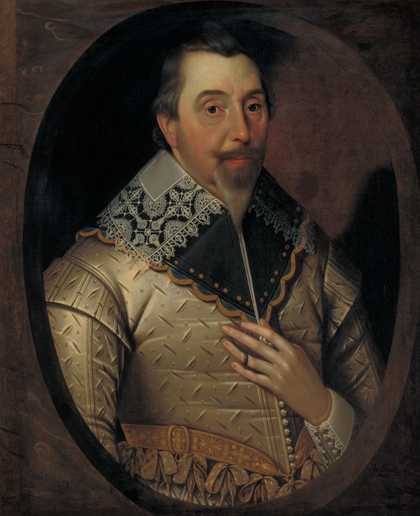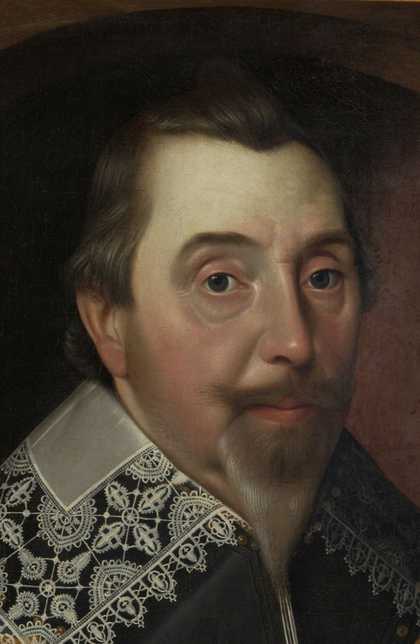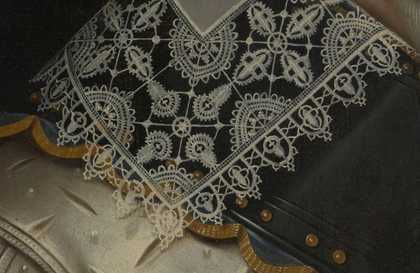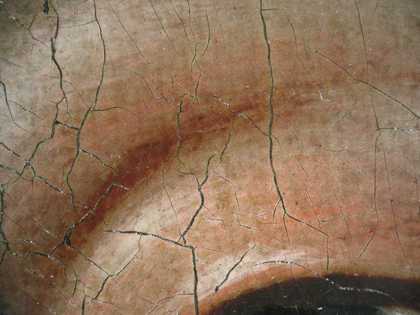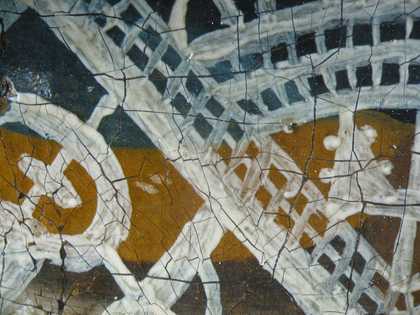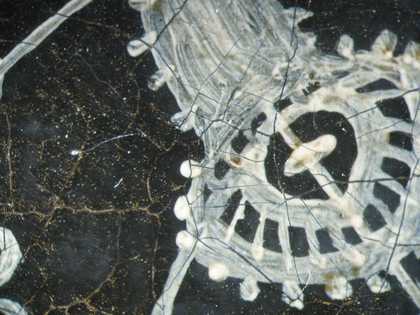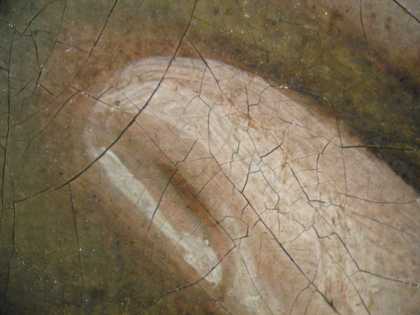This painting is in oil paint on canvas measuring 770 x 640 mm (figs.1–4). The linen canvas has a loose, plain weave with a thread count of 14 vertical and 13 horizontal picks per square centimetre. As can be seen from the X-radiograph and the infrared reflectogram (figs.5–6), its original tacking edges are now incorporated into the picture plane. The original dimensions of the painting were approximately 750 mm x 600 mm. The old tacking edges are held in plane by a glue-paste lining, which probably dates from the first half of the twentieth century. The adjustable, pine stretcher appears to be contemporary with the lining.

Fig.5
X-radiograph of George Puleston (?) c.1625–30

Fig.6
Infrared reflectograph of the whole painting
The ground is fawn colour and has a fairly coarse texture (figs.7–8). It is composed of lead white, Cologne earth and chalk.1 There is no priming. No underdrawing was detected with infrared reflectography (fig.6) but the clearly defined reserves for each component of the composition indicate careful planning.
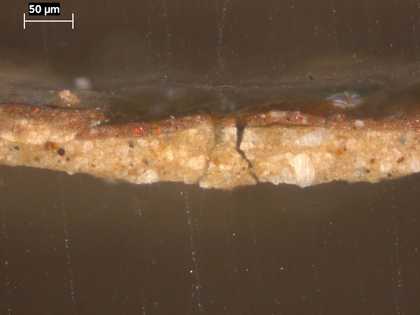
Fig.7
Cross-section through the reddish brown background, photographed at x320 magnification. From the bottom: fragment of fawn coloured ground; single layer of dense, dark red paint
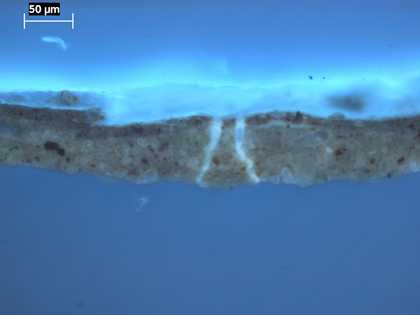
Fig.8
Cross-section through the reddish brown background, photographed at x320 magnification in ultraviolet light. From the bottom: fragment of fawn coloured ground; single layer of dense, dark red paint
A reserve was left in the flesh paint for the finger ring (fig.9). The fawn coloured priming layer is just visible as a warm mid-tone in the sitter’s face, for example the eye sockets (figs.10–11). The artist followed this with loaded highlights and thin transparent glazes in the shadows. The eyes have reserves left for each component, rather than adding the pupils over the iris in turn over the whites. There is also a distinctive flash of red at the corner of each eye, made by glazing red lake on top of opaque red paint.
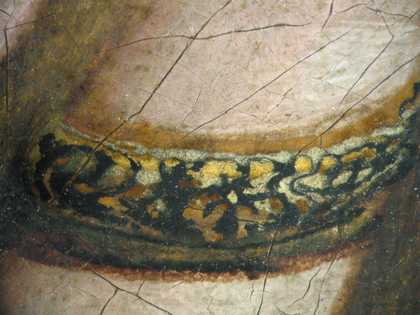
Fig.9
Detail of the ring at x8 magnification, showing the reserve left for it in the flesh paint
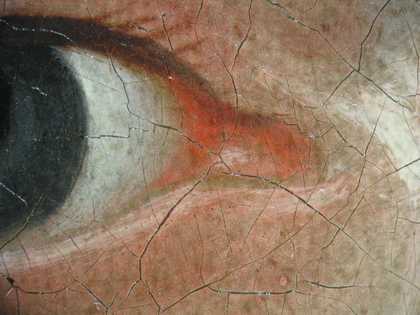
Fig.10
Detail at x8 of the sitter’s right eye, showing the fawn coloured ground left visible to form a half-shadow between the inner corner and the highlight below it
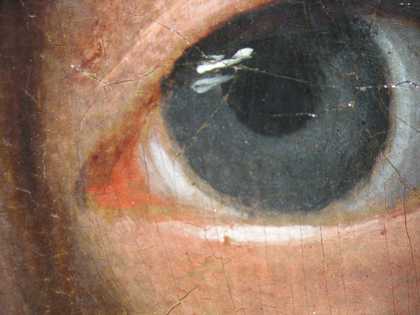
Fig.11
Detail at x8 of the sitter’s left eye
The costume and background are composed mainly of opaque colours worked together wet-in-wet in one layer with details such as the decorative details and highlights laid in on top (figs.12–15).
The painting is signed in the lower right corner (fig.16).
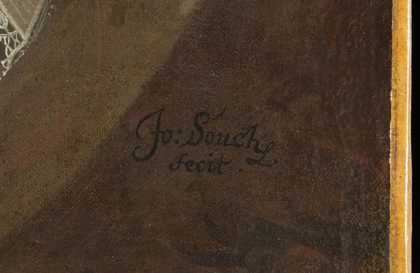
Fig.16
Detail of the signature
May 2005

